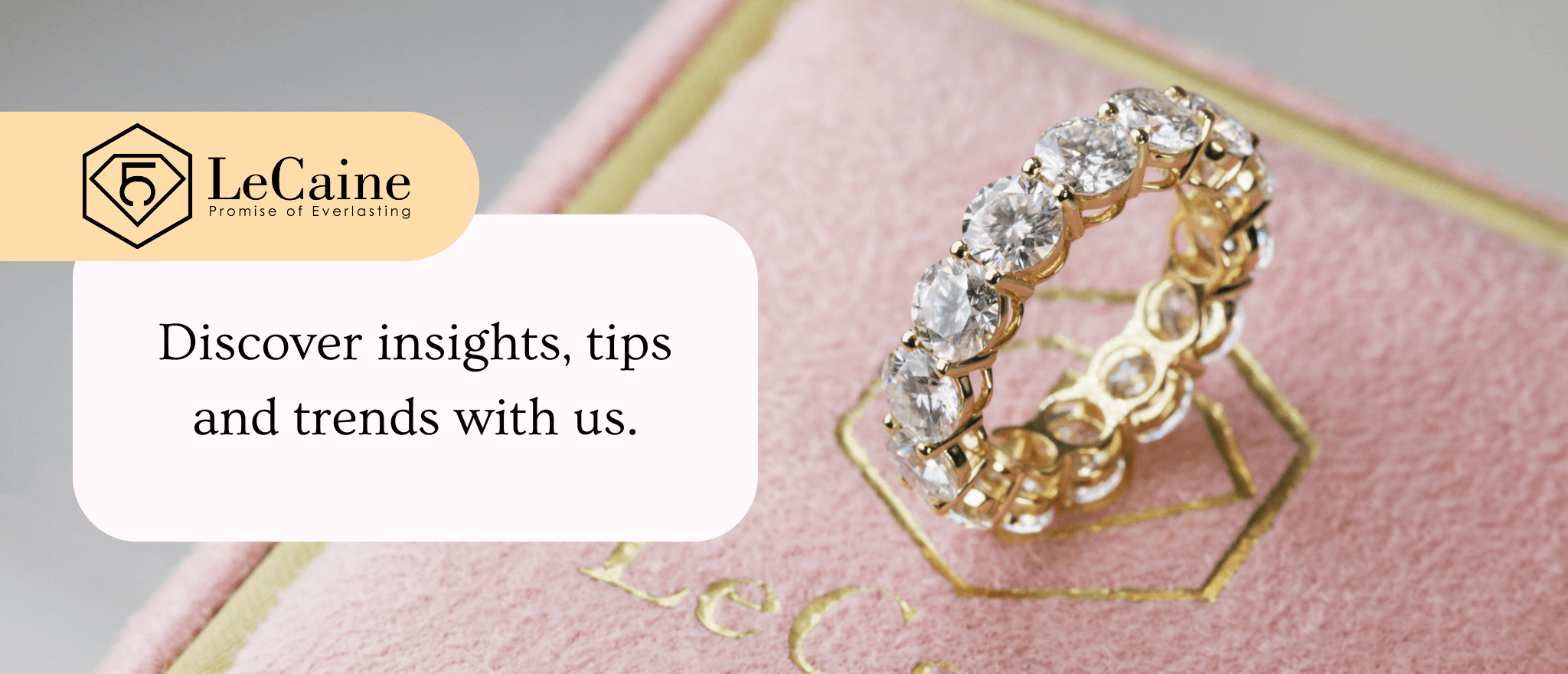
Blogs Page 5 - LeCaine Gems
21
Jul
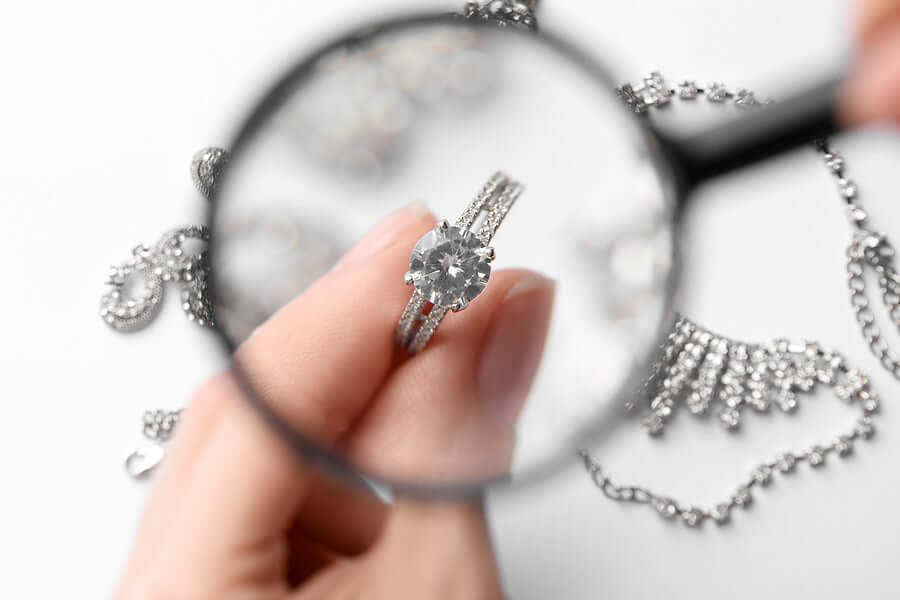
6 Telling Signs of Counterfeit Jewelry on the Internet
In the modern era of digital commerce, we are bestowed with the convenience of accessing an extensive array of commodities at our fingertips. Nonetheless, amidst this convenience lies a notable caveat: the peril of stumbling upon counterfeit products, particularly precious and invaluable items such as jewelry.
As astute individuals seeking the finest quality, we must uphold unwavering vigilance, honing our ability to discern the tell-tale signs that indicate the presence of counterfeit jewelry in the online sphere.
1. Discrepancies in Price and Value
When purchasing online jewelry in Singapore, a discerning buyer should be sceptical of any notable disparity between the price and the perceived value of a coveted item. Counterfeit jewelry, in its cunning endeavour to entice unwary buyers, often presents alluringly low prices that evoke a sense of doubt.
Yet, let us acknowledge the reality: authentic jewelry, fashioned from high-quality materials and fine craftsmanship, bears a commensurate price. These enticing bargains, though tempting, demand caution. For instance, certain unmistakable traits of counterfeit jewelry are namely shoddy workmanship and substandard materials.
2. Inaccurate Product Descriptions
As discerning consumers, our reliance on precise product descriptions is paramount to making informed decisions when engaging in purchases. Nevertheless, in the realm of counterfeit jewelry, an elevated sense of vigilance is indispensable.
Misleading or vague descriptions serve as red flags that necessitate a pause for contemplation. Esteemed merchants take immense pride in providing detailed information regarding the materials employed, the calibre of gemstones, as well as certifications or assurances of authenticity. Conversely, purveyors of counterfeit wares may resort to deceptive language or withhold vital information pertaining to the jewelry they are peddling. It is incumbent to meticulously scrutinise these descriptions to safeguard our interests, ensuring their comprehensiveness, accuracy, and transparency.
3. Suspicious Seller Reputation
The reputation of the seller is a crucial factor when making an online jewelry purchase. Authentic purveyors diligently aim to nurture a positive rapport with their customers by consistently delivering good service and high-quality merchandise. In stark contrast, counterfeit sellers frequently exhibit a glaring lack of customer appraisals or, more disconcertingly, bear witness to unfavourable feedback from previous patrons.
Additionally, genuine vendors provide easily accessible and reliable means of communication, facilitating our correspondence with them. Conversely, counterfeit merchants may confound us, forcing us to engage in futile quests for their contact information or, in some instances, discover their complete absence. By heeding these indicators, we strengthen our defences against unscrupulous peddlers, enabling us to engage in secure transactions.
4. Poor Quality and Craftsmanship
If there is one thing counterfeit jewelry cannot hide, it is substandard quality and craftsmanship. Genuine jewelry radiates resplendence, the result of meticulous precision and expert mastery, culminating in flawlessly symmetrical compositions. Counterfeit jewelry, however, often betrays its inherent deficiencies through tell-tale flaws: irregular gemstone placements, loose stones, or visible signs of wear, discolouration, and breakage. These imperfections serve as beacons, exposing the absence of craftsmanship and the utilisation of substandard materials.
5. Lack of Certification or Authenticity
The utmost importance of precious gemstones lies in their authenticity. Genuine jewelry, bearing the mark of credibility, typically arrives accompanied by certifications or guarantees assuring us of its genuine nature. In stark contrast, counterfeit jewelry lacks these essential certifications, endeavouring to surreptitiously present synthetic or low-grade gemstones as valuable ones.
Genuine gemstones are subjected to the scrutiny of reputable grading laboratories to receive the coveted seal of certification, thereby empowering discerning buyers to make well-informed choices. Should jewelry lack the requisite certificate or offers unverifiable claims of authenticity, it is incumbent upon us to proceed with caution. By steadfastly insisting upon credible certifications, we protect ourselves from the perils of counterfeit or deceitfully misrepresented goods.
6. Suspicious Trade in Policies
A reputable seller understands the profound significance of customer satisfaction and embraces equitable trade-in policies. Regrettably, counterfeit sellers frequently resort to dubious tactics in this area. They may offer non-existent or unfair policies, burdening purchasers with exorbitant fees, restrictive timeframes, or convoluted procedures that all but impede the possibility of trade-ins. By diligently scrutinising these policies, we exercise discernment in selecting sellers who wholeheartedly prioritise the satisfaction of their clientele, thereby safeguarding our rights as discerning buyers.
Conclusion
As the popularity of online shopping soars, so does the prevalence of counterfeit jewelry on the internet. However, by learning to recognise the signs of counterfeit jewellery, we can protect ourselves from deceptive schemes and ensure that our online purchases are genuine and of high quality.
At LeCaine Gems, we understand the importance of authenticity and trust when it comes to purchasing jewelry online. Experience the joy of owning exquisite, one-of-a-kind jewelry pieces that are crafted with passion and precision. Explore our stunning collection of handcrafted gems, each meticulously designed to reflect elegance and timeless beauty. From sparkling diamond necklaces to dazzling gemstone rings, every piece is a testament to our dedication to creating lasting treasures.
Browse our website today and indulge in the allure of genuine gemstones, including our exquisite collection of 1 carat diamond rings in Singapore.
13
Jul

Captivating Wedding Shoot Locations in Singapore and Southeast Asia
Planning a wedding shoot is an exciting part of the wedding journey, and finding the perfect location is key to capturing stunning and memorable photos. If you're in Singapore or exploring Southeast Asia for your wedding shoot, you're in luck! This region is filled with breathtaking landscapes, vibrant cultures, and picturesque spots that will elevate your wedding album to new heights. In this article, we'll explore some captivating wedding shoot locations in Singapore and across Southeast Asia.
Chijmes, Singapore
Chijmes is a beautifully restored historic complex that exudes elegance and charm. The stunning architecture, arched walkways, and manicured gardens create a romantic setting for your wedding shoot. Capture timeless moments against the backdrop of this architectural gem.
Haji Lane, Singapore
For a vibrant and eclectic backdrop, head to Haji Lane in the heart of Kampong Glam. This narrow street is adorned with colorful murals, quirky shops, and hip cafes. Its unique charm and street art provide a lively and artistic setting for your wedding shoot.
Gardens by the Bay, Singapore
Immerse yourself in a futuristic garden wonderland at Gardens by the Bay. This iconic attraction features the Supertree Grove, Cloud Forest, and Flower Dome, offering a stunning backdrop for your wedding shoot. Capture the magic of towering trees, vibrant flowers, and the breathtaking Marina Bay skyline.
Sentosa Island, Singapore
Escape to the idyllic island of Sentosa for a romantic beach wedding shoot. The pristine sandy beaches, crystal-clear waters, and picturesque sunsets create a dreamy atmosphere. Don't miss the chance to capture moments on the Southernmost Point of Continental Asia or at Fort Siloso for a touch of history.
Bali, Indonesia
Bali's natural beauty and cultural richness make it an ideal destination for a wedding shoot. From pristine beaches like Nusa Dua and Seminyak to the lush rice terraces of Ubud, Bali offers a diverse range of landscapes. Don't miss the iconic sunset at Uluwatu Temple or the picturesque waterfalls in the northern regions for enchanting photos.
Angkor Wat, Cambodia
Step into a realm of ancient grandeur at Angkor Wat, a UNESCO World Heritage Site in Siem Reap, Cambodia. This majestic temple complex provides a unique and awe-inspiring backdrop for a wedding shoot. Capture the mystical atmosphere and intricate details of this architectural masterpiece.
Hoi An, Vietnam
Hoi An's old town, with its lantern-lit streets and ancient buildings, is like stepping back in time. The charming riverside setting, vibrant colors, and colonial architecture offer endless possibilities for capturing romantic moments. Stroll through the narrow lanes and capture the essence of this UNESCO-listed gem.
Ha Long Bay, Vietnam
Explore the ethereal beauty of Ha Long Bay in Vietnam. With its towering limestone karsts, emerald waters, and hidden caves, this UNESCO World Heritage Site offers a fairytale-like setting. A boat ride through the bay provides an opportunity to capture stunning moments against the dramatic backdrop of the karst formations.
Phuket, Thailand
Known for its stunning beaches and crystal-clear waters, Phuket is a tropical paradise that provides a romantic backdrop for a wedding shoot. Whether it's the vibrant Patong Beach, the tranquil Kata Noi Beach, or the iconic limestone cliffs of Phang Nga Bay, Phuket offers diverse options for breathtaking photos.
Krabi, Thailand
Krabi's stunning coastline, pristine beaches, and limestone cliffs make it an ideal destination for a beach wedding shoot. The famous Railay Beach, with its turquoise waters and towering cliffs, offers a romantic atmosphere. Don't forget to explore the nearby Phi Phi Islands or take a long-tail boat to capture breathtaking shots.
Luang Prabang, Laos
Nestled amidst mountains and situated on the banks of the Mekong River, Luang Prabang offers a serene and picturesque setting for a wedding shoot. The town's well-preserved French colonial architecture, Buddhist temples, and vibrant markets provide endless opportunities for capturing authentic and romantic moments.
At LeCaine Gems, discerning customers are invited to indulge in a luxurious jewelry
experience that blends craftsmanship with forward-thinking innovation, all with a
conscious touch. As your trusted jeweler, we offer an unparalleled selection of exquisite
pieces. Renowned for our bespoke Diamond jewelry in Singapore, our
range extends to include Lab Diamond jewelry, vibrant-coloured gemstones, and
glamorous Si Dian Jin sets.
Schedule an appointment or contact us via WhatsApp at +65 8020 0353 to explore our
exquisite jewelry collection. Experience the allure of LeCaine Gems, where refined
jewelry pieces are brought to life.
13
Jul
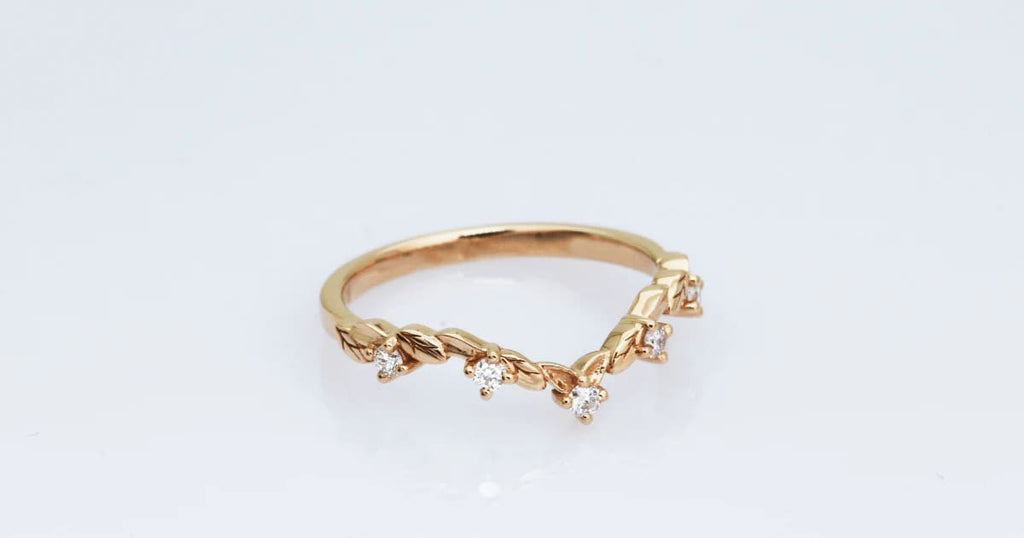
Timeless and Trendy: Wedding Band Designs to Symbolise Everlasting Love
A wedding band holds immense significance as a symbol of eternal love and commitment. While the engagement ring may steal the spotlight, the wedding band is a cherished piece of jewelry that represents the lifelong bond between partners. From classic designs to contemporary styles, there are countless options available to suit every couple's taste. In this article, we'll explore a variety of wedding band designs that are both timeless and trendy, ensuring your ring stands the test of time.
Two-Tone Bands
Shop Megara Twist Wedding Ring
Two-tone wedding bands are an increasingly popular choice among couples. These rings combine two different metals, such as white gold and rose gold or platinum and yellow gold, creating a striking contrast. Two-tone bands add visual interest and versatility, as they can easily be matched with other jewelry.
Eternity Bands
Eternity bands are a symbol of everlasting love. These rings feature a continuous row of diamonds or gemstones encircling the entire band, representing an unbroken circle of commitment. Eternity bands can be worn alone or stacked with an engagement ring for a dazzling and glamorous look.
Customised and Personalised
Create a truly one-of-a-kind wedding band by opting for a customised and personalised design. Work with a jeweller to incorporate meaningful elements, such as initials, birthstones, or special engravings that hold sentimental value. A personalised wedding band is a beautiful way to make your ring uniquely yours.
Minimalist Bands
Shop Liana Ring
Less is more with minimalist wedding bands. These sleek and understated rings focus on simplicity and clean lines. A plain metal band or a slim diamond band can make a bold statement in its minimalist beauty. Minimalist bands are perfect for those who prefer a subtle and refined aesthetic.
Stackable Bands
Shop Moira Wedding Ring
Stackable wedding bands allow for creativity and versatility. These bands are designed to be worn together, either on the same finger or stacked with an engagement ring. Mix and match metals, gemstones, and widths to create a personalised stack that reflects your unique style.
Nature-Inspired
For couples who have a deep connection with nature, nature-inspired wedding bands are an excellent choice. These bands often feature intricate leaf motifs, floral patterns, or organic textures that mimic the beauty of the natural world. Nature-inspired designs offer a unique and meaningful way to express your love for one another.
Vintage-Inspired
For those who appreciate a touch of nostalgia and intricate details, vintage-inspired wedding bands are an excellent choice. These designs often feature delicate engravings, filigree work, and milgrain edges that add a romantic and timeless charm to the ring. Vintage-inspired bands evoke a sense of history and elegance.
Contemporary and Geometric
Shop Ilonka Matching Wedding Rings
If you prefer a modern and edgy look, consider contemporary and geometric wedding band designs. These bands feature clean lines, asymmetrical shapes, and unique metalwork. From angular designs to interlocking patterns, contemporary bands offer a sleek and artistic twist on traditional wedding rings.
Black Diamond or Alternative Gemstone Bands
For a non-traditional twist, consider wedding bands adorned with black diamonds or alternative gemstones. Black diamonds or salt and pepper diamonds exude elegance and a sophisticated grunge wear, while gemstones like sapphires, emeralds, or morganites offer a pop of colour and individuality. These alternative options can add a touch of personality to your wedding band.
When choosing a wedding band, consider a design that resonates with your personal style and reflects the everlasting love you share with your partner. Whether you prefer classic simplicity, vintage elegance, or contemporary flair, there is a wedding band design out there that will capture the essence of your unique love story. Select a design that stands the test of time, ensuring that your wedding band remains a cherished symbol of your commitment for years to come.
At LeCaine Gems, discerning customers are invited to indulge in a luxurious jewelry
experience that blends craftsmanship with forward-thinking innovation, all with a
conscious touch. As your trusted jeweler, we offer an unparalleled selection of exquisite
pieces. Renowned for our bespoke Diamond jewelry in Singapore, our
range extends to include Lab Diamond jewelry, vibrant-coloured gemstones, and
glamorous Si Dian Jin sets.
Schedule an appointment or contact us via WhatsApp at +65 8020 0353 to explore our
exquisite jewelry collection. Experience the allure of LeCaine Gems, where refined
jewelry pieces are brought to life.
13
Jul

The Art of Stacking: How to Pair and Stack Wedding Bands with Engagement Rings
Stacking wedding bands with an engagement ring has become a popular trend in recent years, allowing couples to create unique and personalised ring combinations. Whether you want to add sparkle, texture, or colour to your engagement ring, mastering the art of stacking can elevate your bridal jewelry game. In this article, we'll explore some helpful tips and ideas on how to stack wedding bands with engagement rings to create a stunning and cohesive look.
Consider Your Engagement Ring Design
Before diving into stacking, take a close look at your engagement ring design. Consider its shape, setting, and any existing details. This will help you choose complementary wedding bands that enhance the overall aesthetic of your engagement ring.
Find the Perfect Fit
Ensure that the wedding bands you choose fit snugly against your engagement ring. It's important to create a harmonious stack where the rings sit together seamlessly without any noticeable gaps. Work with a jeweller to find wedding bands that are specifically designed to complement your engagement ring.
Play with Different Widths
Experiment with different band widths to achieve a balanced and dynamic stack. If your engagement ring has a narrower band, you can opt for a wider wedding band to create a statement look. Conversely, if your engagement ring has a wider band, consider pairing it with slimmer wedding bands for a more delicate and layered appearance.
Enhance with Curved or Contoured Bands
Curved or contoured wedding bands are specifically designed to fit snugly around the shape of your engagement ring. These bands enhance the overall look by hugging the curves and adding extra dimension. They are an excellent choice for engagement rings with unique settings or intricate designs.
Explore Different Textures
Incorporate texture into your stack by choosing wedding bands with interesting details. Consider bands with engraving, milgrain edges, or hammered finishes. These textures can add depth and create a captivating contrast against the smooth surface of your engagement ring.
Add Sparkle with Gemstones
If you're looking to add extra sparkle to your stack, consider incorporating gemstone bands. You can choose bands with diamonds, coloured gemstones, or a combination of both. These gemstone bands can be placed on either side of your engagement ring to create a dazzling effect.
Play with Patterns
Explore wedding bands with unique patterns or alternating diamond arrangements. Chevron, floral, or geometric patterns can bring an artistic touch to your stack. These patterned bands can be worn alone or paired with a plain band to create a captivating mix of textures and designs.
Don't Be Afraid to Experiment
Stacking wedding bands with an engagement ring is an opportunity to express your personal style and creativity. Don't be afraid to experiment with different combinations, mixing and matching various bands until you find the perfect stack that represents your unique love story.
Stacking wedding bands with an engagement ring allows you to create a personalised and stunning bridal jewelry look. By considering the design of your engagement ring, experimenting with different metals, widths, textures, and gemstones, you can achieve a stack that beautifully complements your engagement ring while adding your own touch of individuality. Remember, the art of stacking is all about finding the perfect balance and creating a ring stack that reflects your personal style and symbolises the love and commitment you share with your partner.
At LeCaine Gems, discerning customers are invited to indulge in a luxurious jewelry
experience that blends craftsmanship with forward-thinking innovation, all with a
conscious touch. As your trusted jeweler, we offer an unparalleled selection of exquisite
pieces. Renowned for our bespoke Diamond jewelry in Singapore, our
range extends to include Lab Diamond jewelry, vibrant-coloured gemstones, and
glamorous Si Dian Jin sets.
Schedule an appointment or contact us via WhatsApp at +65 8020 0353 to explore our
exquisite jewelry collection. Experience the allure of LeCaine Gems, where refined
jewelry pieces are brought to life.
13
Jul

10 Unique and Romantic Ways to Get Engaged with a Proposal Ring in Singapore
Are you ready to take the plunge and propose to your special someone in the dazzling city of Singapore? Look no further! Here are 10 creative and unforgettable ideas to make your proposal truly magical. Prepare to sweep your loved one off their feet with these engaging experiences.
A Private Rooftop Picnic
Plan a surprise picnic on a beautiful rooftop overlooking Singapore's skyline. Decorate the area with fairy lights, candles, and flower petals. As you enjoy a delightful meal, present the engagement ring, making this a moment that will be etched in your partner's heart forever.
Sentimental Treasure Hunt
Create a personalised treasure hunt around significant locations in Singapore, leading your partner on a romantic journey down memory lane. Each clue can represent a special memory or milestone in your relationship. At the final destination, surprise them with the proposal ring and heartfelt words.
Sky-High Proposal
Book Singapore Flyer ride and soar above Singapore's breathtaking landscapes. As you ascend to the top, take this opportunity to express your love and commitment, and then unveil the engagement ring, ensuring a proposal they'll never forget.
Underwater Surprise
Source: Victoria Wedding Collection
For adventurous couples, consider proposing underwater at one of Singapore's fantastic diving spots. Arrange a scuba diving session and secretly hide the proposal ring in a waterproof case. As you explore the vibrant underwater world together, unveil the ring, and make your partner's dreams come true.
A Romantic Dinner Cruise
Embark on a luxurious dinner cruise along the Singapore River, enjoying gourmet cuisine and mesmerising views. As the sun sets and the city lights sparkle, seize the perfect moment to propose, leaving your partner speechless against the backdrop of Singapore's stunning skyline.
Magical Gardens by the Bay
Plan a romantic stroll through the enchanting Gardens by the Bay. Choose the Flower Dome or Cloud Forest as your proposal spot, and arrange for a private moment amidst the blossoming flowers and lush greenery. Get down on one knee and present the engagement ring, surrounded by the captivating beauty of nature.
Sentosa Island Surprise
Take your partner on an exciting adventure to Sentosa Island, Singapore's playground of fun. Plan a surprise activity, such as a thrilling cable car ride or a romantic beach picnic. Just as they least expect it, reveal the engagement ring and pop the question, capturing their heart in this sunny paradise.
Heritage Walk in Chinatown
Immerse yourselves in the rich heritage of Chinatown with a guided tour through its colorful streets. Arrange for a surprise performance by a traditional lion dance troupe, attracting attention from onlookers. Amidst the joyous festivities, present the engagement ring and show your partner your eagerness to build a future together.
Coney Island
Escape the bustling city and venture to Coney Island for a serene and private proposal. Explore the nature trails hand-in-hand and find a peaceful spot on one of the island's pristine beaches to create a romantic moment.
Intimate Sunset at Marina Bay Sands
Plan an intimate evening on the rooftop of Marina Bay Sands, overlooking the picturesque cityscape. As the sun sets, casting a golden glow across the city, surprise your partner with a heartfelt proposal, accompanied by the stunning panorama of Singapore's skyline as your witness.
Singapore offers a plethora of remarkable settings and experiences to make your engagement unforgettable. Choose one of these unique and romantic ideas to surprise your loved one and begin your journey towards a lifetime of love and happiness. Whichever way you decide to propose, remember that the most important ingredient is your genuine love and commitment to your other half. LeCaine is located in the bay area where the above mentioned places are close by, you can always drop by our lovely boutique to view and discuss your desired engagement ring design to complete your proposal!
26
Jun
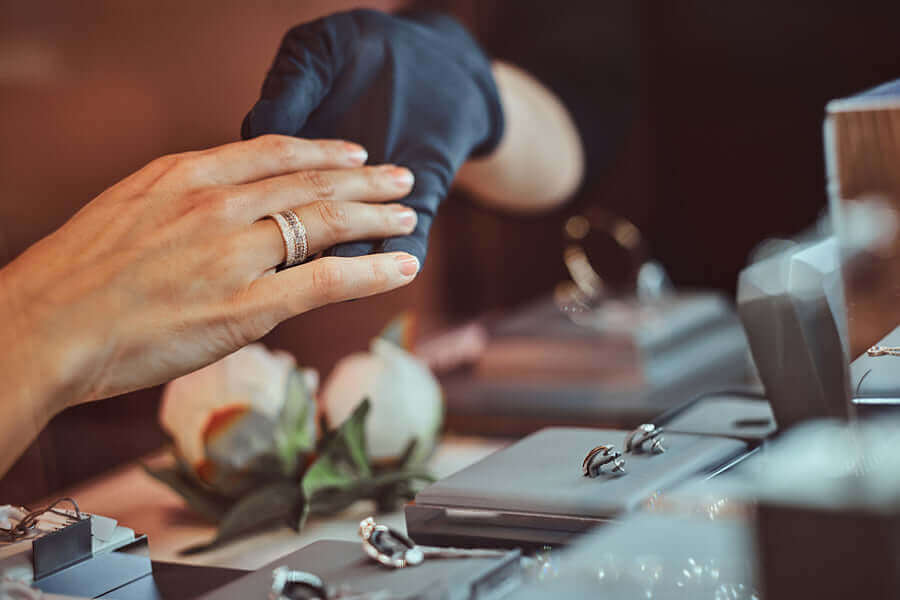
The Unique Benefits of In-Person Jewelry Experiences
In a world dominated by online shopping, the value of in-person interactions is often overlooked, especially when it comes to jewelry. Whether you seek a lab diamond jewelry piece or find the perfect jewelry gift, there is an undeniable allure to experiencing jewelry first-hand.
From the sheer joy of trying on exquisite pieces to the personalised guidance offered by knowledgeable professionals, in-person jewelry experiences take you on an unforgettable journey. Let us delve into the delightful advantages that await those who opt for the charm of shopping for jewelry in person.
1. The Sensorial Experience
One of the most significant advantages of in-person jewelry experiences is the sensory delight they bring. Beyond its visual appeal, jewelry as an art form engages our senses in captivating ways.
By physically holding a piece, feeling its weight, and examining its craftsmanship up close, you get to truly appreciate its unique beauty. The sparkle of gemstones, the sleekness of polished metals, and even the gentle sound of chains intertwining contribute to the rich sensory tapestry of in-person jewelry shopping.
Shop Lab Grown Rubies Tennis Bracelet
2. Trying On and Personalisation
Trying on jewelry is an enchanting experience that cannot be replicated online. When shopping for jewelry in person, you get to adorn yourself with exquisite necklaces, earrings, bracelets, and rings, creating a personal connection with each piece.
Furthermore, the act of trying on jewelry becomes an intricate dance between aesthetics and personal style. It lets you see how each jewel sparkles and drapes on your body, ensuring a seamless fit that harmonises flawlessly with your unique flair. This profound interaction and customisation add immense value to the in-person jewelry shopping experience, making it a cherished and profoundly personal journey to be savoured.
3. Expert Advice and Guidance
In-person jewelry experiences provide an invaluable opportunity to tap into the expertise and knowledge of trained professionals. These passionate experts are well-versed in the intricacies of gemstones, metals, and craftsmanship techniques. They can offer personalised guidance, tailoring their recommendations to your preferences, occasion, and budget.
Whether you seek the perfect engagement ring, want to understand diamond quality, or wish to explore different design options, these professionals are equipped to answer your questions and provide insightful recommendations. Their expertise and advice serve as a trusted companion, empowering you to make informed and confident jewelry purchases.
Shop Avery Asscher Lab Grown Blue Sapphire Ring
4. Building Trust and Authenticity
Purchasing jewelry often involves a significant investment, both financially and emotionally. During these moments, in-person jewelry experiences emerge as beacons of trust and authenticity.
Through face-to-face interactions with seasoned professionals, you can forge a genuine connection, seek guidance, and handle your chosen pieces with reverence. This personal touch serves as a comforting affirmation that the jewelry you invest in is a stunning masterpiece and a symbol of unwavering commitment to superior quality and ethical sourcing, reinforcing your discerning choices.
5. Creating Lasting Memories
Last but not least, in-person jewelry experiences can weave lasting memories that transcend the mere act of making a purchase. Whether it is the unforgettable moment of choosing an engagement ring or the joy of crafting a bespoke piece to celebrate a milestone, these experiences become treasured memories intertwined with the jewelry itself.
The process of exploring exquisite pieces, the pleasure of trying them on, and the thoughtful selection, whether shared with loved ones or embraced in solitary reflection, etch themselves upon your heart, leaving an indelible mark. These memories bestow an emotional depth to the jewelry, transforming it into a tangible embodiment of those important moments and cherished experiences that have shaped your life.
Embrace the Splendour of In-Person Jewelry Experiences
While online shopping undoubtedly offers convenience, the in-person jewelry experience unfolds a world of benefits that simply cannot be replicated virtually. So why not seize the opportunity to embrace these unique benefits and indulge in the beauty and joy of jewelry in person? It is an experience that should not be overlooked or missed!
Indulge in the captivating jewelry pieces with Lecaine Gems and embark on an unforgettable in-person experience. Step into our store and discover a vast selection of exquisite pieces that will ignite your imagination. Whether your heart desires a mesmerising solitaire ring in Singapore, a dazzling necklace, or a unique pair of earrings, our team is here with you at every step.
Seize the opportunity to forge lasting memories as you immerse yourself in the artistry and allure of fine jewelry in person. Visit Lecaine Gems today, and let us transform your jewelry aspirations into reality!
15
Jun
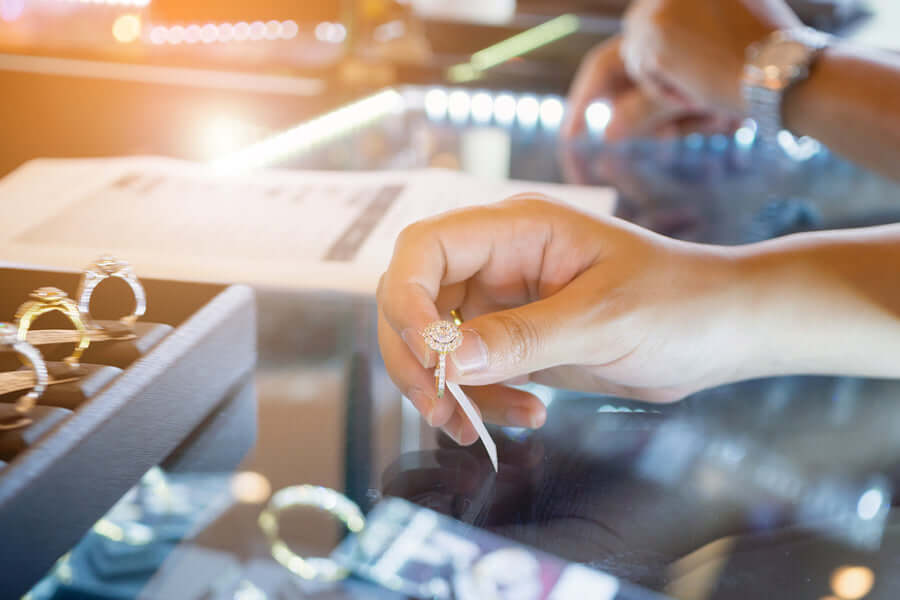
A Shopper’s Paradise: Unveiling LeCaine Gems’ Ideal Location
Choosing the perfect location for a business has always been crucial, as it significantly impacts customer attraction and loyalty. When establishing LeCaine Gems, we meticulously considered the importance of a strategic location. Situated at the heart of the vibrant Millenia Walk, our exquisite store serves as a testament to the careful planning and effort required for a successful jewelry business in a thriving metropolitan area.
Discover LeCaine Gems
Experience the pinnacle of fine craftsmanship with LeCaine Gems, a renowned jeweler hailing from Singapore and Hong Kong, where our artisans craft exquisite, unique jewelry pieces tailored to each individual. With a commitment to the harmonious blend of ethically sourced gemstones and lab-grown diamond alternatives, we bring forth breathtakingly beautiful jewelry that is both affordable and sustainable.
Distinguished as a leader in moissanite jewelry production in Singapore, LeCaine Gems employs cutting-edge technologies to fashion these radiant diamond alternatives. With the rising demand for eco-friendly and conflict-free diamonds, moissanite engagement rings have become a coveted choice among discerning buyers.
At the core of our ethos, LeCaine Gems uphold fair pricing and ethical business practices. Rest assured, as every jewelry piece we offer is 100% authentic, eco-conscious, and free from conflicts. Whether you seek a necklace adorned with a pear-cut moissanite pendant or a dashing solitaire ring in Singapore, LeCaine Gems ensures a fantastic selection at an exceptional value.
Millenia Walk: The Home of LeCaine Gems
LeCaine Gems is located at 9 Raffles Boulevard, Singapore, at the renowned Millenia Walk. Set amidst the picturesque Marina Bay area, Millenia Walk exudes vibrancy, housing a meticulously curated selection of shops offering a diverse range of products and services. As the pinnacle of luxurious lifestyle shopping in Marina Centre, this esteemed mall holds a coveted position within Singapore’s Downtown Core.
Here are compelling reasons why our location is a veritable paradise for jewelry enthusiasts and discerning shoppers alike.
Unparalleled Convenience
Millenia Walk stands as a haven of retail luxury, catering to tasteful shoppers seeking excellent craftsmanship, inspiring lifestyle products, and bespoke offerings. A retail utopia where one can find an extensive array of necessities, from cutting-edge electronics to bespoke jewelry creations by LeCaine Gems.
Ease of Access
Accessing the grandeur of Millenia Walk poses no challenge. Nestled in the heart of Singapore, this distinguished shopping centre finds itself close to renowned hotels and iconic attractions such as the Singapore Flyer, Esplanade – Theatres on the Bay, and the Merlion. Accessing Millenia Walk is also effortless, with three MRT stations nearby: City Hall Station, Esplanade Station, and Promenade Station.
Architecture Views
Beyond convenience and accessibility, Millenia Walk captivates discerning shoppers, including patrons of LeCaine Gems, with its remarkable architectural beauty. Built to deliver a distinctive shopping experience, the mall showcases an open-design concept that beckons visitors into a spacious and inviting environment adorned with a harmonious blend of vibrant colours.
Creative Environment
Within the inspiring ambience of Millenia Walk, creativity thrives. The mall is a nurturing ground for artistic expression and innovation, providing a platform for talented individuals to showcase their creativity. From captivating art installations to interactive exhibitions, Millenia Walk’s creative environment stimulates the imagination and sparks inspiration in both residents and visitors.
The Specialty of Millenia Walk: A Sustainable Social Neighbourhood Mall
Millenia Walk is more than a sustainable mall in Singapore’s bustling metropolis. It thrives as a vibrant social hub, fostering a strong sense of community and connection. While sustainability is a cornerstone of its operations, Millenia Walk goes further by actively engaging and inspiring its visitors.
Through diverse initiatives and events, Millenia Walk cultivates an inclusive environment where neighbours unite, celebrate, and forge meaningful bonds. The Neighbourhood Socials, in particular, create a lively ambience that encourages individuals to share their passions and explore new interests. These events serve as catalysts for interaction, providing a space for people to connect, collaborate, and build relationships.
As a cultural hub, Millenia Walk showcases captivating art installations, interactive exhibitions, and dedicated spaces for local artists, designers, and creatives to display their work. This enriches the community’s cultural experiences and strengthens the connection between residents and visitors.
Driven by its unwavering commitment to sustainability, community-focused events, and support for local talent, Millenia Walk strives to be a positive force for change. It transcends its role as a mere shopping destination, creating an environment where social connections flourish, creativity thrives, and a sustainable and responsible lifestyle is embraced.
LeCaine Gems: The Epitome of Refined Jewelry Pieces
With its convenience, accessibility, and distinctive cultural ethos, it is no surprise that LeCaine Gems has found its home in this vibrant location. Aligned with Millenia Walk’s visionary concept of “Making Waves – Move ahead with Millenia Walk,” LeCaine Gems embodies innovation at its core.
Through the creation of handcrafted jewelry using fine materials like moissanite and ethically sourced gemstones, LeCaine Gems not only crafts stunning, unique pieces but also aims to inspire a widespread impact on society and the industry. Sustainability is a key consideration, ensuring that each jewelry creation reflects a commitment to ethical practices and environmental responsibility.
At LeCaine Gems, discerning customers are invited to indulge in a luxurious jewelry experience that blends craftsmanship with forward-thinking innovation, all with a conscious touch. As your trusted jeweler, we offer an unparalleled selection of exquisite pieces, whether you desire heart-shaped moissanite stud earrings or a captivating 1-carat diamond ring. Renowned for our bespoke diamond jewelry in Singapore, our range extends to include lab diamond jewelry, vibrant-coloured gemstones, and alluring Si Dian Jin sets.
Schedule an appointment or contact us via WhatsApp at +65 8020 0353 to explore our exquisite jewelry collection. Experience the allure of LeCaine Gems, where refined jewelry pieces are brought to life.
30
May
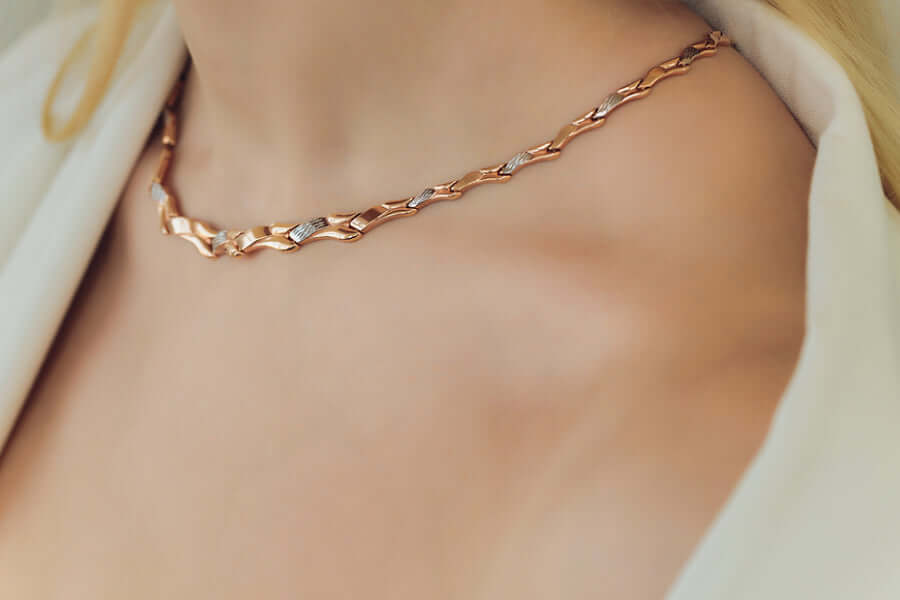
Tips for Choosing Jewelry That Complements Your Skin Tone
The realm of jewelry offers myriad avenues for self-expression, from the intricate artistry of custom made diamond jewelry to other forms of embellishment. Nevertheless, it is vital to recognise that not all jewelry is universally flattering. A discerning eye and appreciation for the nuances of one’s skin tone and undertone are integral in discovering the perfect jewelry to complement one’s complexion.
Understanding Skin Tones and Undertones
Essentially, skin tone refers to the natural shade of our skin, while undertone is the subtle hint of colour underneath the surface.
It is widely accepted that there are three primary skin tones: warm, cool, and neutral. Warm undertones boast a beautiful golden or yellowish tint, while cool undertones reveal a soft pink or bluish hue. On the other hand, neutral undertones are the perfect balance of warm and cool tones, giving you the best of both worlds.
Determining Your Skin Tone and Undertone
To unveil your skin tone and undertone, an effective method involves examining the veins on your wrist.
If you perceive a blue or purple hue, it signifies a cool undertone, whereas a green tint indicates a warm undertone. However, if discerning the colour of your veins poses a challenge, you might possess a neutral undertone.
Jewelry Recommendations for Warm Skin Tones
If you have warm skin tones, you can enhance your natural glow with a variety of metals and gemstones. Yellow (or champagne) gold is a popular choice, as they bring out the warmth in the skin. Earthy tones like rose gold can also work beautifully, especially when paired with statement pieces like diamond necklaces or tennis bracelets.
In terms of gemstones, you can opt for shades of green, orange, and yellow. Green gems such as emeralds can add a fresh and vibrant pop of colour. Gold and yellow stones like zircon and yellow sapphire can also complement your complexion, adding a touch of luxury and elegance to any look.
Jewelry Recommendations for Cool Skin Tones
If you have cool skin tones, you can create a chic and refined appearance by opting for light or white metals like white gold, platinum, and silver. These metals can be beautifully accentuated with appropriate gemstones such as diamonds, sapphires, and emeralds. To add a pop of colour and create a stunning contrast, shades of purple, pink, red, and dark blue can be perfect choices. Specifically, gemstones like amethyst, sapphire, ruby, and pink tourmaline can enhance your jewelry collection with their elegance and glamour.
When selecting jewelry, delicate jewelry like pendant necklaces and classic diamond studs can highlight your natural beauty while maintaining a subtle elegance. On the other hand, bold statement jewelry or bright, colourful stones may not complement your complexion as well. Gold jewelry, in particular, should be avoided as it may overpower your cool tones and create an unflattering clash.
Jewelry Recommendations for Neutral Skin Tones
If you have neutral skin tones, you have the luxury of being able to experiment with various jewelry colours and materials to find the perfect match. Metals such as yellow gold, silver, and rose gold are versatile and flattering options that complement you beautifully. For gemstones, you can opt for elegant and sophisticated options like amethyst, which will add a touch of subtle glamour to any outfit.
The beauty of having a neutral skin tone is that you can try out a range of jewelry styles, from delicate and understated to bold and daring. Your skin tone provides a blank canvas that can carry off any jewelry look with ease, so feel free to explore and experiment until you find the perfect style that suits your unique personality and taste.
Discovering Your Perfect Jewelry Match
Selecting jewelry that flatters your skin tone is an art form that requires attention to detail and personal preference. Remember that these recommendations are just a starting point, so do not hesitate to step out of your comfort zone and try new styles and colours. Ultimately, wearing pieces that make you feel confident and beautiful is the most crucial factor.
LeCaine Gems is an online jewelry shop in Singapore that offers a diverse range of exquisite jewelry pieces, featuring a kaleidoscope of hues and shades to cater to various tastes. Our seasoned representatives are always on hand to provide personalised guidance, ensuring a seamless and enjoyable purchasing experience.
Contact us today to schedule a personal consultation or inquire about our custom jewelry options. Alternatively, we invite you to visit our flagship store for a more hands-on experience. Let us assist you in finding the perfect piece that accentuates your natural radiance.
19
May
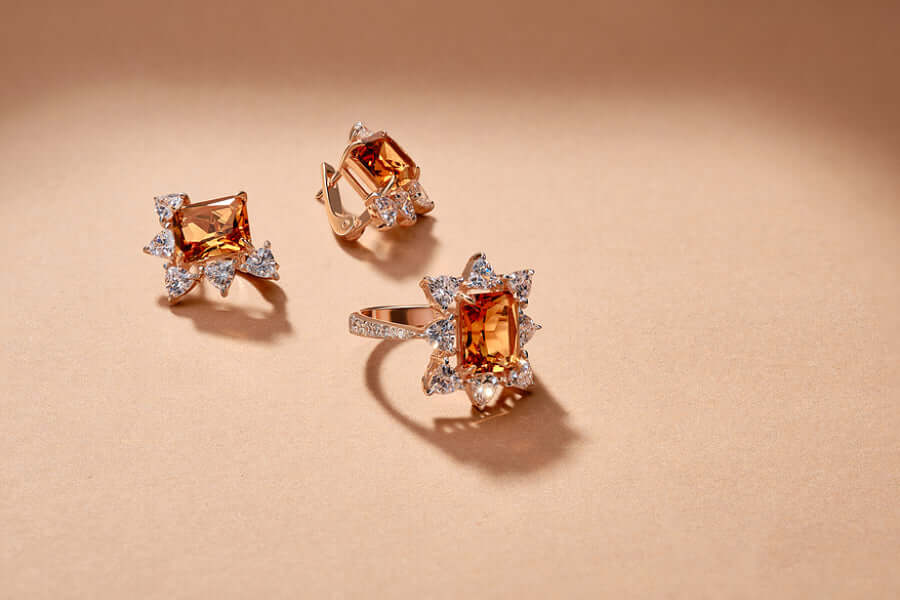
The Significance of Jewelry Across Cultures in Singapore
Jewelry has long been regarded as a vital component of cultural traditions worldwide, and Singapore is certainly no exception. The nation’s rich tapestry of diverse cultures is steeped in various customs and practices, many of which prominently feature jewelry.
With this article, we shall delve into the multifaceted significance of jewelry across cultures in Singapore. Moreover, we shall consider how these traditions have come to embody and celebrate the values of cultural diversity and appreciation, further highlighting the unifying potential of this timeless art form.
The Significance of Jewelry in Chinese Culture in Singapore
The role of jewelry in Chinese culture is deeply intertwined with tradition and symbolism and remains a crucial aspect of various celebrations and events. Historical records indicate that Chinese jewelry has been used to convey meaning and messages since ancient times.
Jade: Ancient China’s Most Precious Stone
An example of the intrinsic connection between jewelry and symbolism in Chinese culture is the precious stone known as jade. Revered as a cornerstone in Chinese jewelry, jade is held in the highest regard, appreciated for its restorative properties and ability to dispel negative energy. The Chinese firmly believe in the stone’s potency to attract good fortune, wealth, and prosperity, thus rendering it an auspicious gift for occasions such as weddings, birthdays, and anniversaries.
The Symbolic Significance of Gold in Chinese Jewelry
Gold is another material that enjoys extensive use in Chinese jewelry. Signifying wealth and prosperity, it is believed that wearing gold jewelry can bring good luck and fortune to the wearer.
Si Dian Jin: A Timeless Tradition in Chinese Weddings
The Chinese wedding ceremony is steeped in rich cultural heritage and traditions, one of which is Si Dian Jin, or the “four touches of gold.” It is a time-honoured custom where the groom’s family presents the bride with a set of gold jewelry, including a necklace, bracelet, earrings, and ring. This gift of Si Dian Jin symbolises the groom’s unwavering devotion to his beloved and serves as an emblem of his family’s warm embrace of the bride into their family.
Si Dian Jin holds more than just material value, as these heirloom pieces are often passed down through generations, embodying the enduring familial ties that bind. These precious ornaments represent cherished traditions and values that are intrinsic to the fabric of Chinese society.
The aesthetic value of Chinese jewelry is equally significant, transcending its utilitarian purposes. Exquisitely crafted with intricate patterns and symbols, they represent an art form in its own right. For instance, the dragon and phoenix are two of the most popular symbols in Chinese jewelry, symbolising power, strength, beauty, and grace, respectively. These symbols are frequently incorporated into Chinese wedding jewelry, as they are believed to bring good fortune and blessings to the couple.
The Significance of Jewelry in Malay Culture in Singapore
Jewelry in Malay culture manifests in various types, each imbued with unique symbolism and significance.
Bunga Tanjung: A Hallmark of Traditional Malay Jewelry
The adornment of traditional Malay jewelry is replete with nature-inspired floral motifs. Among the most favoured designs was the bunga tanjung, a ubiquitous local flower woven into various jewelry forms, ranging from rings, earrings, and necklaces to brooches.
These floral patterns, symbolic of grace and femininity, were fashioned in gold and often accentuated with precious gemstones or diamonds. Depictions of birds, insects, and other animals, along with celestial symbols such as stars and crescents, similarly manifested in the designs of Malay jewelry, testifying to its diversity and cultural richness.
The Kerongsang: A Prime Example of Traditional Malay Jewelry
Another instance of traditional Malay jewelry is the kerongsang, a trio of brooches that elegantly adorn the kebaya, the traditional Malay blouse. Meticulously crafted from precious metals like gold or silver, these brooches boast intricate designs, often incorporating floral or geometric motifs. While its ornamental value is undeniable, the kerongsang is also regarded as a symbol of a woman’s innate grace, femininity, and beauty.
Jewelry as a Key Element of Malay Festivities
Jewelry also plays an indispensable role in various traditional festivities and ceremonies. One such occasion is the grand celebration of Hari Raya, which marks the end of the holy month of Ramadan in the Muslim calendar.
During this joyous festivity, Malay women adorn themselves with exquisite, vibrant jewelry that accentuates their natural beauty and grace. Bedecked with bangles, bracelets, and necklaces crafted from the finest gold or silver, such jewelry pieces embody the enduring Malay belief in the power of ornaments to evoke notions of prosperity and good fortune.
Symbolism and Significance of Jewelry in Malay Weddings
In the context of a traditional Malay wedding, the bride’s ensemble is incomplete without the adornment of exquisite jewelry pieces. The exchange of gifts between the betrothed, known as hantaran, encompasses an assortment of indulgences, ranging from delectable food items to luxury goods, including designer bags, shoes, and, of course, jewelry.
Amidst this lavish array of offerings, the jewelry pieces hold a special place. Crafted from the finest precious metals and meticulously designed, they exude a sense of magnificence and finesse, fitting the bride’s beauty and elegance. Necklaces, bracelets, and rings are commonly gifted jewelry items, each adorned with intricate patterns that reflect the bride’s beauty and elegance.
The Significance of Jewelry in Indian Culture in Singapore
In Indian culture, jewelry embodies a rich and diverse history of symbolism and tradition. Within this context, Indian weddings stand out as an occasion where the adornment of jewelry takes on an elevated significance. The bride, in particular, is the centrepiece of this grand celebration, adorned with exquisite jewelry that reflects her beauty and elegance.
Maang Tikka: Bestowing Wisdom and Will upon the Bride
In keeping with tradition, gold jewelry holds a place of honour in the bride’s ensemble and is often gifted to her by her parents or in-laws. The jewelry set comprises a range of pieces, including necklaces, bangles, earrings, and rings, each designed with precious stones and metals. Completing the ensemble is the maang tikka, an auspicious headpiece. Worn at the centre of the forehead, the maang tikka represents the bride’s ability to control her emotions and tap into her power of concentration, bestowing her with the will and wisdom to embrace life’s journey.
The Mangalsutra: A Symbol of Sacred Matrimony
The mangalsutra, a sacred necklace worn by married women as an emblem of their marital status, is considered an essential component of Indian jewelry. It is crafted using black and gold beads, and its design is subject to variation contingent on the region or community. Apart from the mangalsutra, married women may accessorise themselves with other customary jewelry pieces, including bangles, earrings, and nose rings.
Jewelry in Cultural Traditions: A Reflection of Singapore’s Rich Cultural Tapestry
Jewelry bears significance across the diverse cultures in Singapore. It is a hallmark of tradition, love, and prosperity, commemorating important milestones and celebratory events. The use of jewelry in cultural customs embodies Singapore’s multifaceted cultural legacy, fostering the spirit of diversity and intercultural understanding in society.
Discover the epitome of luxury and elegance at LeCaine Gems, a reputable online jewelry shop in Singapore. Our exceptional craftsmanship is reflected in every jewelry piece, meticulously crafted with the finest materials to create a lasting impression. From solitaire diamond rings to Si Dian Jin sets in Singapore, our collection boasts unique designs that cater to diverse tastes and preferences. Experience the essence of jewelry and explore our exclusive range of designs at our flagship store or on our website. Shop now and express your style with timeless sophistication.
26
Apr
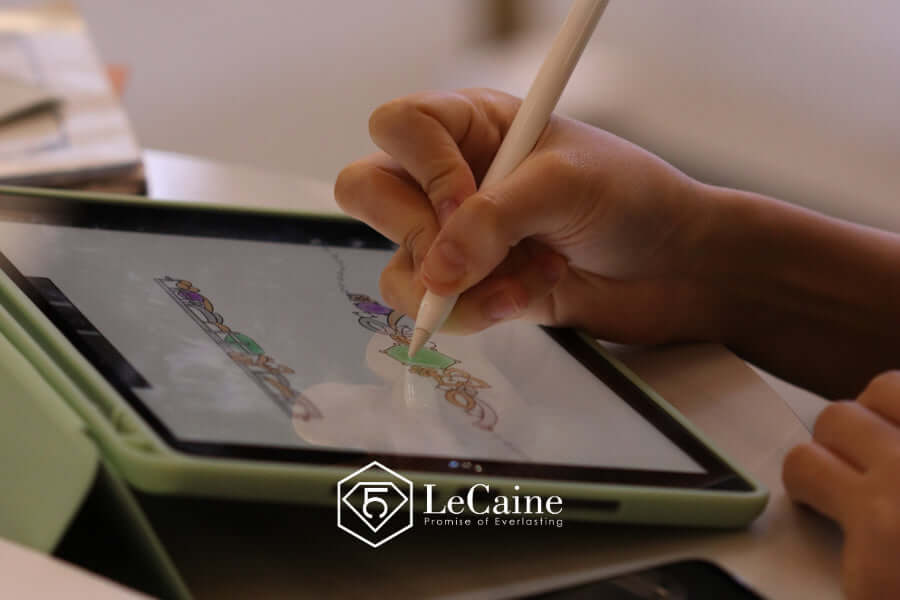
6 Tips for a Successful Collaboration with a Bespoke Jeweler
Are you dreaming of designing a piece of bespoke diamond jewelry that embodies your unique style and personality? Collaborating with a bespoke jeweler is the perfect way to bring your vision to life. From engagement rings to custom necklaces, the possibilities are endless when it comes to creating a custom jewelry piece that holds a special place in your heart.
However, how can you ensure that you effectively work with a jeweler to achieve your desired outcome? In this article, we will share our top tips for working with a bespoke jeweler, from the initial consultation to the final product. So, let’s dive in and discover how to turn your jewelry aspirations into a stunning reality.
Tip 1: Do Your Research
Thoroughly researching your selected bespoke jeweler is the first and most crucial step. Examining their background, experience, and prior works is essential to ensure that their style and aesthetic align with your personal taste and preferences. The ultimate objective is to identify a jeweler with exceptional skill capable of adeptly manifesting your creative vision into a unique, unparalleled work of art that embodies your individuality.
Tip 2: Set a Realistic Budget
Before commencing the design process, having a realistic budget in mind is paramount. Additionally, transparently communicating your budgetary limitations and priorities to your selected bespoke jeweler is pivotal. A reputable jeweler will engage in collaborative efforts with you to ensure that your creative vision aligns seamlessly with your budgetary constraints. Participating in an open and honest dialogue regarding your financial parameters empowers your jeweler to craft the quintessential piece while remaining within the prescribed budgetary guidelines.
Tip 3: Communicate Your Vision
Effective communication is of utmost importance in any collaborative undertaking, and even more so in the creation of bespoke jewelry. It is essential to articulate your vision for the piece with clarity and precision. Sharing inspirational images or sketches can also aid in effectively conveying your concepts to the jeweler. In short, providing a detailed account of your vision will substantially enhance the likelihood of a successful outcome.
Tip 4: Listen to the Jeweler’s Expertise
It is imperative to lend an attentive ear to your chosen bespoke jeweler, whose profound expertise and extensive experience in crafting splendid jewelry pieces are highly commendable. Be sure to remain receptive to their recommendations and feedback throughout the design process. Moreover, fostering an open-minded and collaborative approach ensures that the final product is unparalleled in quality and beauty, fully embodying your unique vision.
Tip 5: Be Patient
It is crucial to acknowledge that crafting a bespoke jewelry piece demands a significant investment of time and effort. Thus, exercising patience during the design and production phase is indispensable. Though the process may extend beyond the anticipated timeline, the eventual result is undoubtedly worth the wait.
Tip 6: Be Prepared for Adjustments
Anticipating adjustments and revisions during the production process is essential. As the jeweler works on the piece, the design may undergo several changes. Therefore, fostering an environment of open communication with your jeweler is necessary to ensure a successful outcome. Being flexible and adaptable to accommodate changes is key to achieving the desired result.
Bringing Your Jewelry Aspirations to Life
To collaborate with a bespoke jeweler is an exhilarating experience that enables you to craft a unique jewelry piece that perfectly embodies your style and personality. By adhering to these six guidelines, you can ensure a fruitful partnership with your preferred jeweler.
LeCaine Gems is a highly esteemed jewelry retailer that boasts a vast assortment of fine jewelry, including custom pieces, necklaces, earrings, and solitaire rings in Singapore. Our selection comprises classic, timeless designs, as well as modern and edgy pieces, all crafted from premium materials by our skilled artisans. We take pride in our commitment to delivering top-notch quality, which is evident in each of our masterpieces, perfect for any occasion. To begin creating your bespoke masterpiece, contact us today to schedule an appointment or send us a WhatsApp message at +65 8020 0353.
14
Apr
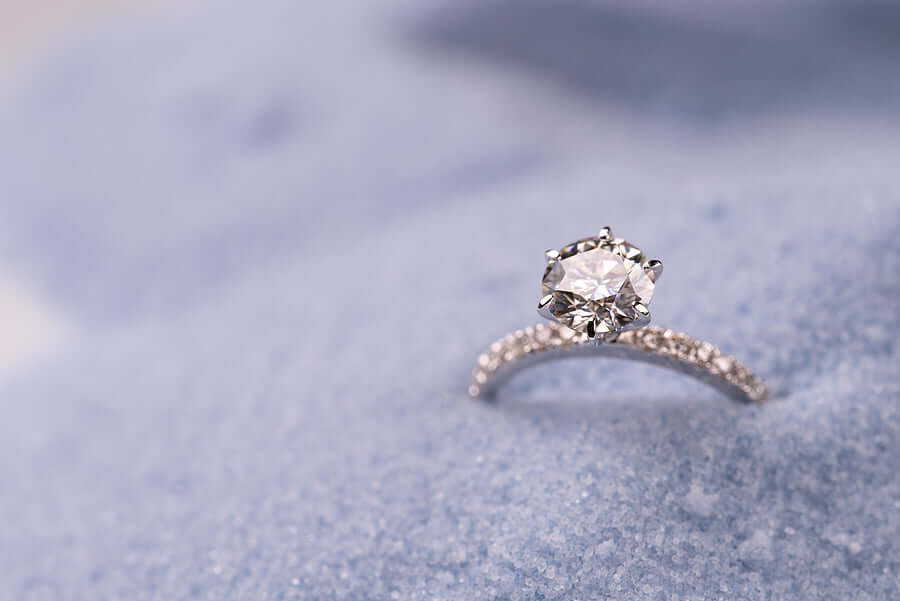
Battle of the Bands: Comparing Solitaire Ring Types
Engagement rings hold a special place in a bride-to-be’s heart, and amongst the plethora of options available, the solitaire ring stands out as an eternal classic. The ring’s minimalist design has enticed couples worldwide, rendering it a preferred choice for generations.
Nonetheless, selecting the perfect solitaire ring can be challenging, given the various styles available. This article aims to alleviate your concerns by comparing and contrasting the timeless classic solitaire ring with its twisted and pave counterparts, offering you valuable insights to make a well-informed decision when shopping for a solitaire ring in Singapore.
Classic Solitaire Rings
The classic solitaire ring exudes an air of grace and sophistication. This distinguished style features a sleek, unadorned metal band that serves to highlight the striking centre diamond or gemstone, resulting in a minimalist and enduring design. Ideal for those with a preference for subtlety and an inclination to celebrate the natural splendour of their chosen jewel, the classic solitaire ring is a timeless representation of beauty and elegance.
Twisted Solitaire Rings
Twisted solitaire rings, also referred to as braided solitaire rings, boast a distinctive band that appears to be artistically woven or twisted around the centre diamond, imparting a delicate touch of elegance. This subtle twist adds a unique and romantic twist to the classic solitaire ring, making it a perfect choice for individuals seeking a slightly divergent approach while maintaining the timeless quality of this ring style.
Pave Solitaire Rings
The pave solitaire ring is a ring of luxury and grandeur, with a band that is adorned with an array of tiny diamonds that create a sparkling, opulent look. The countless small diamonds that pave the band offer an added luminosity and can even create an illusion of the centre diamond appearing larger. This type of ring is an excellent option for those with a preference for glitz and glamour in their engagement ring.
Comparing the Types of Solitaire Ring Bands
Upon comparing the classic, twisted, and pave solitaire rings, each one exudes its distinct qualities and styles. The classic solitaire ring is celebrated for its timeless elegance, the twisted solitaire ring exudes a unique and romantic aura, while the pave solitaire ring radiates luxury and glamour. When it comes to choosing among these exquisite options, the decision ultimately depends on personal preference and which style resonates with you the most.
Considerations When Selecting a Solitaire Ring
When making a decision on a solitaire ring, there are several factors to consider. The quality of the diamond or gemstone is crucial, as it determines the beauty and durability of the ring. The type of metal for the band is also an essential consideration, with options such as platinum, gold, or rose gold. Furthermore, the size and shape of the diamond or gemstone should be taken into account, along with your lifestyle and preference for a practical and comfortable band design.
Unlocking the Perfect Solitaire Ring
Selecting a solitaire ring is a significant undertaking, and investing ample time and effort to determine the design and style that will suit you best is crucial. With the myriad of options available — from the classic solitaire ring that exudes timeless elegance to the twisted solitaire ring that embodies a unique and romantic touch and the luxurious pave solitaire ring — there is certainly a perfect solitaire ring out there for every discerning taste.
As an esteemed fine jewelry retailer, LeCaine Gems boasts an expansive collection of engagement rings, wedding bands, and Si Dian Jin sets in Singapore. Our stunning collection features sparkling diamonds and dazzling moissanite, ensuring you find a piece that complements your style when you shop with us.
Beyond our vast selection of exquisite designs, we also specialise in crafting custom-made rings that reflect each customer’s unique taste and love story. Whether you need assistance in selecting the ideal jewelry piece or wish to create a bespoke ring, our team is dedicated to delivering a memorable and personalised experience.
Let us help you express your love in the most meaningful way possible by seizing the moment. Contact us via WhatsApp at +65 8020 0353, and our team will guide you in selecting the perfect engagement ring for your special someone.
31
Mar
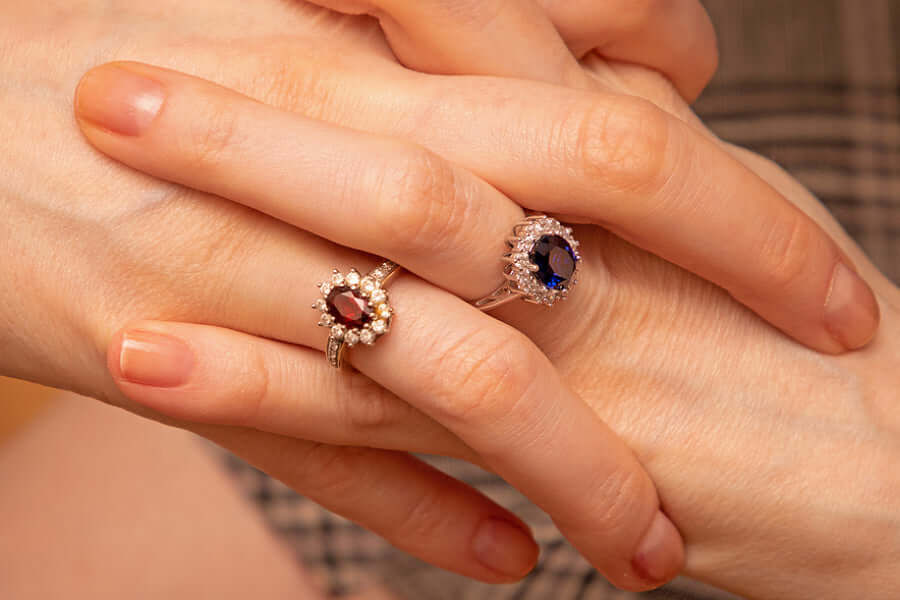
5 Popular Coloured Gemstones & Their Unique Characteristics
Coloured gemstones have long been a popular choice for jewelry, and with the rise of online jewelry shops in Singapore, it has never been easier to find the perfect gemstone piece to add to your collection. From the dazzling blue of sapphires to the stunning purple of amethysts, each stone possesses its own unique charm and appeal.
Whether you are searching for a classic engagement ring or creating your own bespoke piece, a reputable online jewelry shop can provide you with a wide range of options to choose from. So, let’s dive into the world of coloured gemstones and discover their exquisite beauty that makes them irresistible.
Emerald
Emeralds are coveted for their vivid green colour, which is caused by the trace amounts of chromium and vanadium in the mineral beryl’s crystal structure. The value of an emerald is determined by the intensity of its green hue, with more vivid and deeper shades being sought-after.
Inclusions, which are microscopic flaws that can affect clarity and are frequently visible to the naked eye, are a feature of emeralds, unlike other gemstones. Because they resemble natural elements such as flora, these inclusions are commonly referred to as “jardin,” which is French for garden. This gives the stone a unique and organic appearance that many collectors find appealing.
While some buyers may prefer emeralds with fewer inclusions, others consider visible inclusions to be more desirable and valuable as they bring character and personality to the stone. However, it’s essential to note that the visibility and type of inclusions can impact the durability and overall quality of the stone.
In addition to their beauty, emeralds are known for their durability, with a Mohs hardness rating of 7.5 to 8, which is comparable to other gemstones like sapphires and rubies. However, emeralds can be more brittle than other stones due to inclusions and natural fractures within the crystal structure.
Ruby
Rubies are a type of corundum mineral, a crystalline form of aluminium oxide, and are one of the four precious gemstones alongside diamonds, emeralds, and sapphires. They are found in several parts of the world, including Tanzania, Madagascar, Sri Lanka, Thailand, and Myanmar (formerly Burma).
What distinguishes rubies is their deep red colour, which ranges from pinkish-red to purplish-red, caused by the presence of chromium in the crystal structure of the corundum mineral. The amount of chromium present in the crystal determines the intensity and saturation of the red colour.
In addition to their vibrant hue, rubies have exceptional hardness and durability, scoring 9 out of 10 on the Mohs scale of mineral hardness, making them highly resistant to scratching and chipping. They also have an interesting fluorescence property where certain rubies emit a glowing red light when exposed to ultraviolet (UV) light, caused by trace elements in the crystal structure.
The most valuable and sought-after rubies are those with vivid red colours and high clarity. Clarity, which refers to the absence of inclusions or flaws within the gemstone, plays a significant role in determining the beauty and value of the ruby. As a result, a high-quality ruby should have minimal inclusions to enhance its appearance and overall value.
Sapphire
Sapphires, a form of corundum mineral, display an array of colours ranging from blue and pink, to yellow and green, among others. The distinctive colours are due to the presence of trace elements such as iron, titanium, and chromium within their crystal structure, which selectively absorb various wavelengths of light.
Sapphires are highly sought after for use in jewelry owing to their superior durability and brilliance. They rank among the hardest minerals on the Mohs scale with a rating of 9, making them resistant to scratches and chips and ideal for everyday wear.
While blue sapphires are considered the most valuable and sought-after, pink sapphires have also gained popularity and are often used as a diamond alternative in engagement rings. In fact, non-traditional coloured sapphires have become a trendy choice for engagement rings, representing qualities such as faithfulness, trust, and loyalty.
Amethyst
Amethysts, a type of quartz gemstone, are known for their distinctive purple hue ranging from light lilac to deep shades of purple. The presence of iron and other trace elements in the crystal structure causes this. Along with their transparency and clarity, these gems are admired for their stunning beauty.
Another feature of amethysts is their ability to change colour depending on the lighting conditions. This phenomenon, known as pleochroism, can cause amethysts to display varying shades of purple or even blue-green, depending on the angle of the light source.
Due to their aesthetic appeal and durability, amethysts are a popular choice for jewelry. They have a hardness rating of 7 on the Mohs scale, making them highly resistant to scratches and chips and ideal for everyday wear. Additionally, amethysts are reasonably priced and widely available, making them an accessible option for many buyers.
Aquamarine
Aquamarines are a type of beryl mineral with a fascinating pale blue colour. This colour is caused by the presence of iron in the crystal structure, with the intensity and shade of the blue colour varying depending on the amount of iron present.
Aquamarines are admired for their transparency, clarity, and striking blue colour. They exhibit pleochroism, allowing them to display different hues when viewed from different angles or under varying light conditions, with a blue-green or greenish-blue tint being common.
High-quality aquamarines possess a vibrant blue hue and excellent clarity, making them highly valued in the gemstone market. They are often cut into larger, elegant shapes to enhance their beauty and value.
Although Brazil is the primary source of aquamarines, they can also be found in other regions, such as Madagascar, Russia, and the United States. Due to their captivating appearance, aquamarines are a popular choice for various types of jewelry, including rings, necklaces, and earrings.
Personalising Your Jewelry: The Appeal of Coloured Gemstones
Gemstones are a beloved choice for jewelry due to their captivating beauty and individuality. Each gemstone boasts its own unique features, from the deep green of emeralds to the vivid red of rubies. With a broad array of colours and variations available, coloured gemstones are a great way to add personality and flair to any piece of jewelry.
LeCaine Gems is a renowned jewelry retailer in Singapore that specialises in various jewelry pieces, including engagement rings, wedding bands, and Si Dian Jin sets. Our collection comprises stunning diamonds, beautiful moissanite, and alluring gemstones, ensuring you find the perfect piece that suits your taste.
Apart from our extensive range of designs, we also offer bespoke jewelry services to our customers, allowing them to create unique pieces that reflect their individuality and love. To begin designing your own timeless piece of jewelry, book an appointment or send a WhatsApp message to +65 8020 0353.
 Skip to main content
Skip to main content

